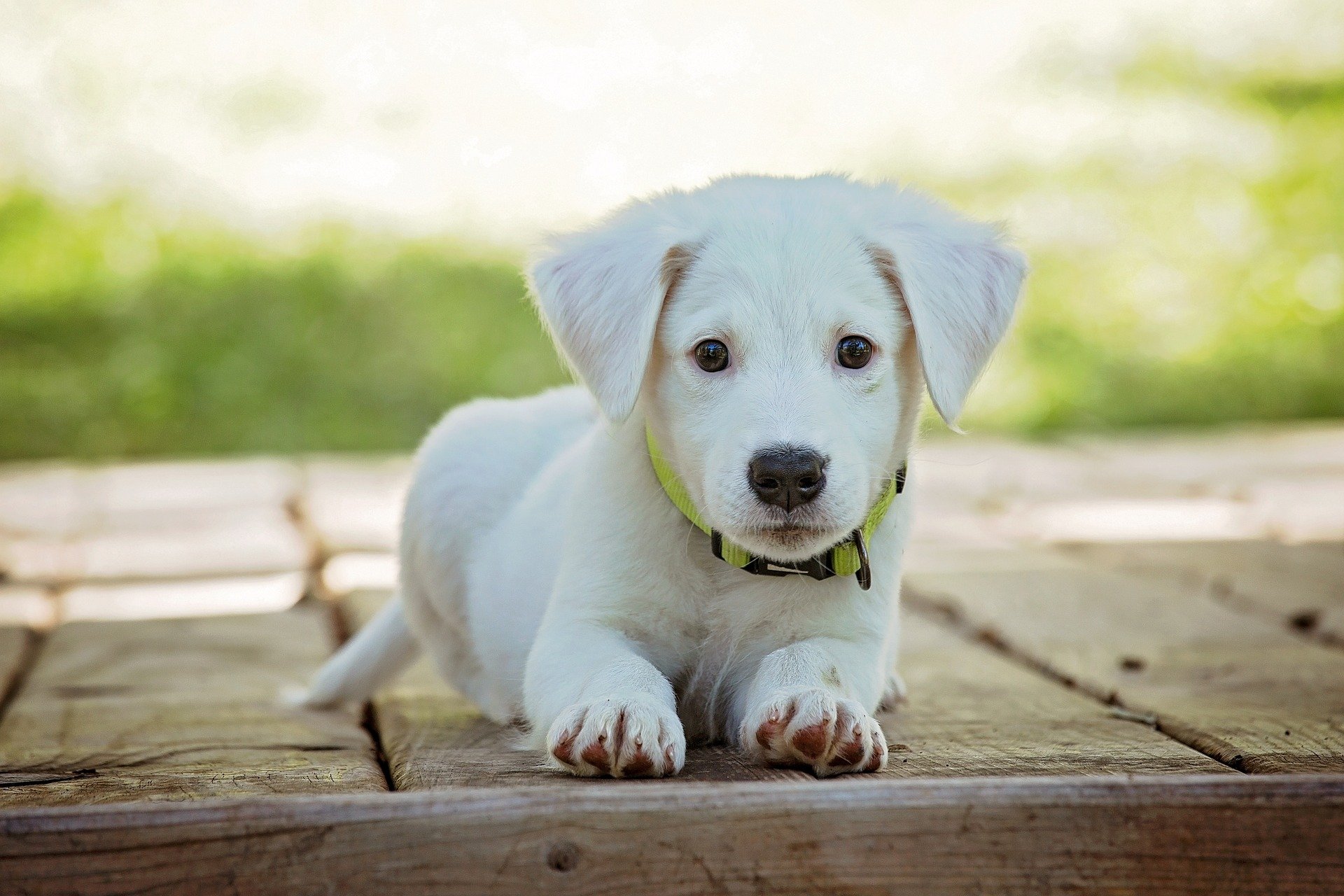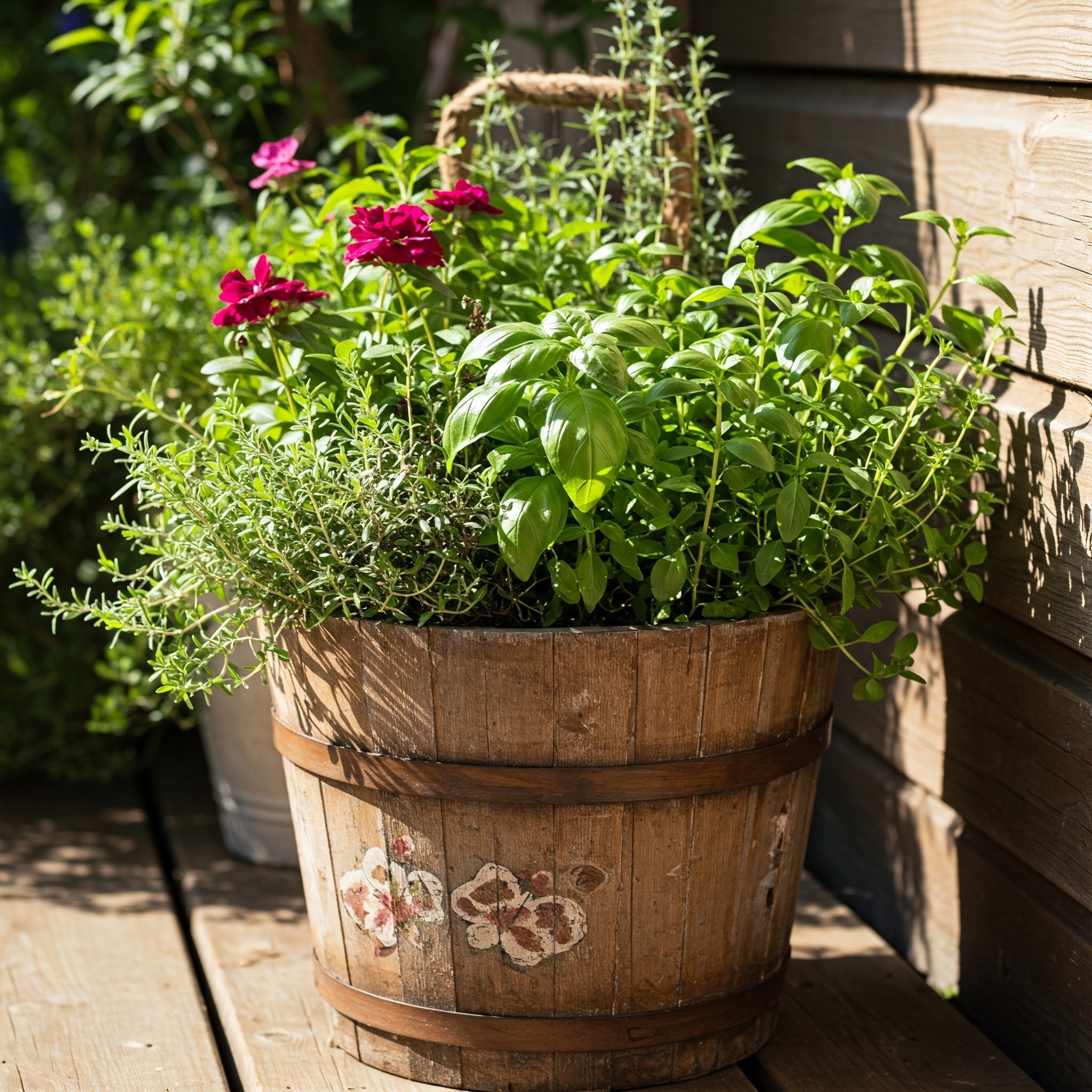Can Dogs Have Green Beans? Expert Advice
Curious if your dog can enjoy green beans? Our guide, "Can Dogs Have Green Beans? Expert Advice," offers all the information you need on this nutritious snack for your furry friend.
We all want the best for our furry friends, and that often includes sharing the healthy foods we love. But, hold your horses—before you toss those green beans into your dog’s bowl, you might wonder, Can dogs have green beans? Expert advice is essential when it comes to our pets’ diets, especially with all the conflicting information out there. Well, you’re in luck! This article will delve into whether green beans are a safe and healthy option for dogs, the best ways to serve them, and some handy tips and tricks for incorporating this veggie into your pup’s diet.
The Big Question: Can Dogs Have Green Beans?
Let’s cut to the chase: Can dogs have green beans? The answer is a resounding yes! Green beans are not only safe for dogs but can also be a nutritious addition to their diet. They’re low in calories and high in fiber, making them a great snack or supplement for our canine companions. But, as with anything, there are some guidelines to follow to ensure your dog enjoys green beans safely and healthily.
Nutritional Benefits of Green Beans for Dogs
Packed with Nutrients
Green beans are a powerhouse of essential nutrients that can benefit your dog in numerous ways. Here’s a breakdown of why they make an excellent addition to your dog’s diet:
1. Vitamins and Minerals
Vitamin A: Essential for maintaining healthy vision, skin, and coat, vitamin A also supports immune function and overall growth.
Vitamin C: This antioxidant helps boost the immune system, supports collagen production for healthy skin and joints, and can aid in reducing inflammation.
Vitamin K: Vital for blood clotting and bone health, vitamin K helps in the synthesis of proteins that regulate these processes.
Minerals: Green beans are a good source of iron, which is crucial for red blood cell production and oxygen transport. They also contain calcium, supporting bone and dental health, and magnesium, which aids in muscle and nerve function.
2. Fiber
Dietary Fiber: High in dietary fiber, green beans can aid in digestion and help regulate bowel movements, making them beneficial for dogs with digestive issues. Fiber also plays a key role in weight management by promoting a feeling of fullness, which can help prevent overeating.
Weight Management: The fiber content in green beans helps your dog feel full and satisfied, which can be particularly useful for dogs on a diet or those prone to weight gain. Including fiber-rich foods like green beans can assist in maintaining a healthy weight and preventing obesity-related health issues.
3. Low in Calories
Calorie Control: For dogs on a diet or those who need to watch their weight, green beans are a low-calorie treat that can satisfy their appetite without adding extra pounds. They provide a nutrient-dense snack option that is both filling and nutritious.
Versatile Treat: Green beans can be served fresh, cooked, or frozen, making them a versatile option for training treats or meal supplements. Just be sure to avoid adding any seasonings, oils, or spices that could be harmful to dogs.
Incorporating green beans into your dog’s diet can provide a range of health benefits, from supporting immune function and bone health to aiding digestion and weight management. Always consult with your veterinarian before introducing new foods to ensure they are safe and appropriate for your dog’s specific dietary needs.
The Green Bean Diet
Some pet owners have heard of the “green bean diet,” a method used to help dogs lose weight by replacing a portion of their regular food with green beans. While this can be effective, it’s essential to consult with a veterinarian before making any significant changes to your dog’s diet.
How to Serve Green Beans to Your Dog
Fresh, Frozen, or Canned?
Not all green beans are created equal, and how you serve them can make a difference in ensuring they are safe and healthy for your dog. Here’s a guide to selecting and preparing green beans for your furry friend:
1. Fresh Green Beans
Best Option: Fresh green beans are the most nutritious choice for dogs. They retain all their natural vitamins and minerals and are free from any preservatives or added ingredients.
Preparation: Simply wash them thoroughly to remove any dirt or pesticides. Cut them into bite-sized pieces to make them easier for your dog to chew and digest. Fresh green beans can be served raw, offering a crunchy texture that many dogs enjoy, or steamed, which makes them softer and easier to eat.
Avoid Seasoning: It’s crucial to avoid adding any seasonings, oils, or spices, as these can be harmful to dogs. Plain green beans are best to ensure your dog’s safety and health.
2. Frozen Green Beans
Convenient and Nutritious: Frozen green beans are a convenient and equally nutritious option. They are often flash-frozen at peak freshness, preserving their nutrient content.
Serving Tips: Make sure the frozen green beans are plain, without any added salt or seasoning. Thaw them before serving, or give them as a crunchy, cool treat on a hot day. Some dogs enjoy the texture of partially thawed green beans, which can also provide a soothing effect for teething puppies.
Check Ingredients: Always check the packaging to ensure no additional ingredients have been added that could be harmful to dogs.
3. Canned Green Beans
Use with Caution: While canned green beans can be a convenient option, they often contain added salt or preservatives. It’s important to choose canned green beans that are labeled as low in sodium or, ideally, no salt added.
Rinse Thoroughly: Before serving canned green beans to your dog, rinse them thoroughly under running water to remove as much salt as possible. This helps reduce the sodium content, which can be harmful to dogs in high amounts.
Moderation: Due to the potential for added sodium, canned green beans should be given in moderation and not as a regular part of your dog’s diet.
By selecting the right type of green beans and preparing them appropriately, you can provide your dog with a healthy, nutritious treat that supports their overall well-being. Always introduce new foods gradually and monitor your dog for any adverse reactions.
How Much is Too Much?
As with any treat, moderation is key when serving green beans to your dog. Here’s how to do so responsibly:
1. Portion Control
Caloric Intake: Green beans should only make up about 10% of your dog’s daily calorie intake. While they are low in calories, it’s important not to overfeed treats, as this can unbalance their diet and lead to weight gain.
Serving Sizes:
Small Dogs: For smaller breeds, a couple of green beans may be sufficient as a treat or meal supplement.
Large Dogs: Larger breeds can enjoy a handful of green beans, but always adjust based on your dog’s size and caloric needs.
Daily Limit: Keep track of how many green beans you’re giving your dog, and reduce the portion size of their regular meals accordingly to prevent overfeeding.
2. Monitor for Reactions
Initial Introduction: Start by offering a small amount of green beans to see how your dog reacts. This is especially important if it’s their first time eating this vegetable.
Signs of Digestive Upset: Watch for any signs of digestive upset, such as vomiting, diarrhea, or constipation. While green beans are generally safe, every dog’s digestive system is different, and some may not tolerate them well.
Allergic Reactions: Although rare, some dogs may be allergic to green beans. Signs of an allergic reaction can include itching, swelling, or difficulty breathing. If you notice any of these symptoms, stop feeding green beans and consult your veterinarian.
Consistent Monitoring: Even after the initial introduction, continue to monitor your dog’s response to green beans over time. Sometimes, sensitivities can develop later.
By adhering to portion control and closely monitoring your dog for any adverse reactions, you can safely incorporate green beans into their diet as a healthy, low-calorie treat. Always consult with your veterinarian if you have any concerns about introducing new foods to your dog’s diet.
Potential Risks and Precautions
Choking Hazards
While green beans are generally safe for dogs, there are a few important precautions to keep in mind to ensure your pet's safety:
1. Size Matters
Choking Hazard: Green beans should be cut into appropriate sizes based on your dog’s size to avoid choking hazards. This is especially important for small breeds or puppies, who may have difficulty chewing larger pieces.
Bite-Sized Pieces: For small dogs, cut green beans into bite-sized pieces that are easy for them to chew and swallow. Larger dogs can handle slightly bigger pieces, but it's still best to avoid giving them whole beans.
Texture Consideration: Raw green beans can be quite firm and crunchy, which might be difficult for some dogs to chew. If necessary, lightly steam the green beans to soften them, making them easier to digest while still retaining most of their nutritional value.
2. Avoid Additives
Toxic Ingredients: Never serve green beans that have been seasoned with garlic, onions, or other additives that are toxic to dogs. These ingredients can cause serious health issues, including gastrointestinal upset and damage to red blood cells.
Plain Preparation: Always serve green beans plain, without any added salt, butter, oil, or spices. Even seemingly harmless seasonings can cause digestive problems or contribute to unhealthy weight gain.
Check Labels: If using canned or frozen green beans, check the ingredient labels carefully to ensure they are free from added salts, preservatives, or other potentially harmful substances.
By following these precautions, you can safely incorporate green beans into your dog’s diet as a healthy, nutritious treat. Always prioritize your dog's safety and well-being by being mindful of the size and preparation of the green beans you offer them.
Gas and Digestive Upset
Green beans are high in fiber, which can sometimes cause gas or digestive upset, especially if introduced suddenly into your dog's diet. Here’s how to introduce green beans safely and what to watch for:
1. Introduce Gradually
Start Small: Begin by offering your dog a small amount of green beans, mixed with their regular food. This helps their digestive system adjust to the increased fiber content.
Gradual Increase: Over several days or weeks, gradually increase the portion of green beans while monitoring your dog’s response. This gradual introduction allows your dog’s digestive system to adapt without causing discomfort.
Consistency: Maintain consistency in the amount of green beans you offer once your dog has adjusted, to avoid any sudden dietary changes that might upset their stomach.
2. Watch for Signs of Digestive Upset
Diarrhea: An increase in fiber can sometimes lead to diarrhea if your dog’s digestive system is not used to it. If you notice loose stools, reduce the amount of green beans and consult your veterinarian if symptoms persist.
Vomiting: While rare, some dogs may vomit if they have difficulty digesting green beans or if they consume too much fiber. If vomiting occurs, discontinue feeding green beans and seek veterinary advice.
Excessive Gas: Fiber can also cause gas in some dogs, which might lead to discomfort or bloating. If your dog experiences excessive gas, it may indicate that they are not tolerating the green beans well, and it may be best to stop feeding them.
Behavioral Changes: Monitor your dog for any changes in behavior, such as lethargy or signs of abdominal discomfort, which could indicate a digestive issue.
By introducing green beans gradually and monitoring for signs of digestive upset, you can help ensure that your dog enjoys the benefits of this nutritious vegetable without any negative side effects. If you notice any concerning symptoms, consult your veterinarian to determine the best course of action and whether green beans are a suitable addition to your dog's diet.
Fun and Creative Ways to Include Green Beans in Your Dog's Diet
Green Bean Treats
Green beans can be a fun and tasty treat for your dog when prepared in creative ways. Here are a few ideas to make green beans an enjoyable addition to your dog's diet:
1. Frozen Green Bean Pops
Refreshing Treat: Blend green beans with a bit of water or low-sodium broth to create a smooth mixture. Pour the mixture into ice cube trays and freeze.
Serving: These frozen green bean pops make a refreshing treat, especially on hot days. They can also help soothe teething puppies or provide a cooling effect for dogs that enjoy crunchy, icy snacks.
2. Green Bean Puree
Nutritious Additive: Puree cooked green beans using a blender or food processor until smooth. You can add a little water or low-sodium broth to achieve the desired consistency.
Mix with Regular Food: Add the green bean puree to your dog's regular food to boost its nutritional content and enhance flavor. This is a great way to incorporate the health benefits of green beans into your dog's diet, especially for picky eaters.
3. Green Bean Biscuits
Homemade Biscuits: Create a dough by mixing green beans with flour and a little low-sodium broth. You can also add other dog-safe ingredients like pumpkin puree or mashed sweet potatoes for extra flavor and nutrition.
Baking: Roll out the dough and cut it into small biscuit shapes using a cookie cutter. Bake the biscuits in the oven until crispy, then let them cool completely before serving.
Crunchy Snack: These homemade green bean biscuits make a crunchy, delicious snack that your dog will love. They are also a healthier alternative to store-bought treats, as you can control the ingredients and avoid additives.
These creative recipes offer fun and nutritious ways to serve green beans to your dog, providing variety and enrichment to their diet. Always introduce new treats gradually and in moderation, and consult your veterinarian if you have any concerns about your dog's dietary needs.
Training Treats
Green beans are a versatile and healthy option for training treats, especially for dogs who need to watch their weight. Here’s how you can incorporate them into your dog’s routine:
1. Low-Calorie Reward
Training Treats: Green beans are naturally low in calories, making them an excellent choice for training rewards. Use small pieces of green beans as a reward during training sessions to reinforce positive behavior without adding extra calories to your dog’s diet.
Portion Control: Break green beans into bite-sized pieces that are easy for your dog to chew and swallow quickly. This keeps the training session flowing smoothly and prevents overfeeding.
Nutrient-Rich Snack: In addition to being low in calories, green beans are packed with essential vitamins and minerals, providing a nutritious alternative to traditional training treats that may be higher in fat or sugar.
2. Healthy Distraction
Occupying Your Dog: Give your dog a few green beans to keep them occupied while you’re busy or as a distraction during activities like grooming, bathing, or nail trimming. The crunchy texture of green beans can engage your dog and keep them focused on chewing rather than on potentially stressful activities.
Calming Treat: Green beans can also serve as a calming treat during times of excitement or anxiety, such as during a car ride or when guests visit. The act of chewing can help soothe your dog and provide a sense of comfort.
Safe and Healthy: Since green beans are low in calories and high in fiber, they can be given more freely than other treats, making them a great option for dogs that need to maintain a healthy weight.
By using green beans as low-calorie training treats and healthy distractions, you can provide your dog with a nutritious snack that supports their overall well-being. Always ensure the green beans are served plain, without any added seasonings or oils, and monitor your dog for any adverse reactions when introducing them into their diet.
Conclusion
So, Can dogs have green beans? Expert advice suggests that they can, indeed! Not only are green beans a safe snack for most dogs, but they’re also packed with nutrients and low in calories, making them an excellent choice for weight management. However, as with any new food, it’s important to introduce green beans gradually and monitor your dog for any adverse reactions. Whether served fresh, frozen, or canned, green beans can be a delicious and healthy addition to your dog’s diet. So go ahead, share some green beans with your furry friend and enjoy the benefits of this versatile veggie!
Remember, a happy dog is a healthy dog! Enjoy those tail wags and happy munching.
Frequently Asked Questions
Can all dogs eat green beans?
While most dogs can safely eat green beans, some may have allergies or sensitivities. Always start with a small amount and watch for any adverse reactions.
Are raw green beans safe for dogs?
Yes, raw green beans are safe for dogs. However, they should be washed thoroughly and cut into small pieces to prevent choking.
Can green beans help my dog lose weight?
Green beans can be part of a weight loss plan for dogs, as they’re low in calories and high in fiber. However, always consult with a veterinarian before making significant changes to your dog’s diet.
How should I prepare green beans for my dog?
Green beans can be served raw, steamed, or frozen. Avoid adding any seasonings, oils, or additives, especially those like garlic and onions that are toxic to dogs.
What should I do if my dog has a reaction to green beans?
If your dog shows signs of digestive upset, such as vomiting or diarrhea, stop feeding green beans and consult your veterinarian for advice.































